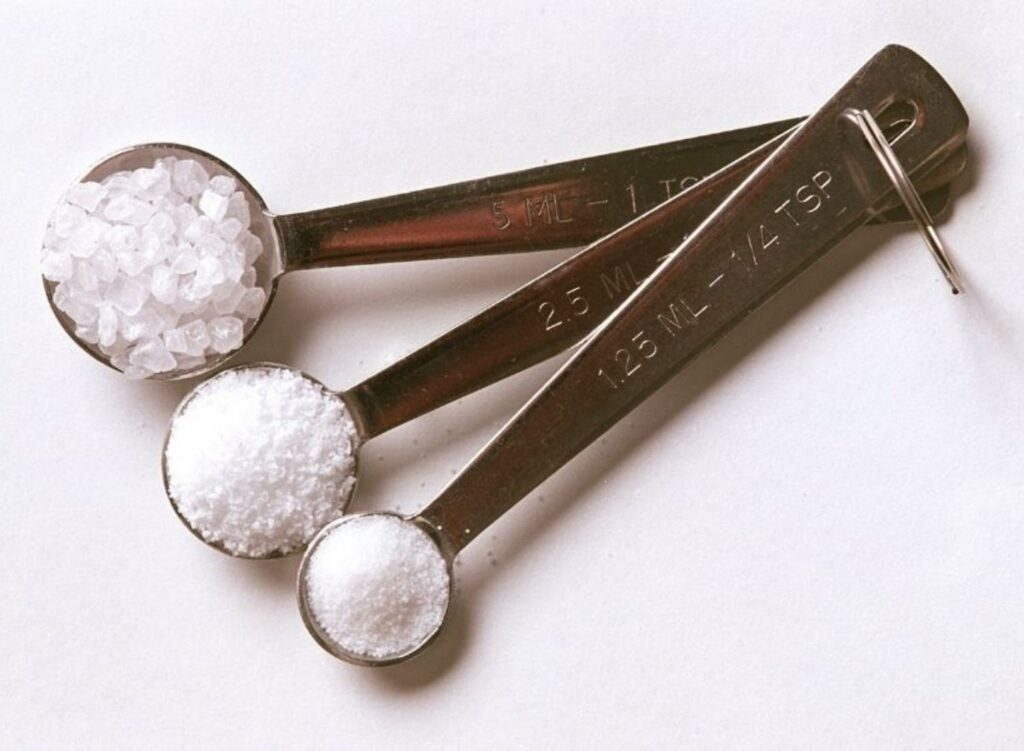It is to be known that The U.S. Centers for Disease Control and Prevention recommends no more than 2,300 mg of sodium in your daily diet and around half of the U.S. population should not have more than 1,500 mg.
- High Sodium consumption and insufficient potassium intake (of less than 3.5 grams/day) contribute to the main source of sodium in our diet which is salt.
- Salt intake less than 5 grams per day for adults helps to reduce blood pressure and risk of cardiovascular diseases etc.
- Reducing salt ingestion has been recognized as one of the most cost-effective measures countries can undertake to improve population health outcomes.
Most people’s salt consumption is excessive—around 9–10 grams per day, or around twice the recommended maximum level of intake.
Statistics

It has been seen and reported that older women who had high blood pressure caused by salt intake were found to have lower concentrations of a certain marker of vitamin D than women with normal blood pressure.
Research shows that a high-salt diet could have a negative impact on our body’s vitamin D level. There is evidence that a high sodium intake increases the loss of calcium in the urine.
Do you know that salt cravings are, in part, controlled by a hypothalamus of the brain that produces hormones that dictate our instinctive needs?
Too much salt can damage:
- Blood vessels
- Heart
- Kidneys
- Brain
12 Surefire Salt De-addiction Strategies

- Throw out the fast, junk food and processed or packaged items. According to the CDC report, around 40 percent of sodium intake comes from these foods like poultry, breads and rolls, turkey, pizza, soups, cheese, etc.
- Eat whole and identifiable foods as you know that processed foods contain lots of sodium. It’s not from the saltshaker. Eating whole foods is good for overall health—whether you’re counting salt intake or not.
- Meal planning helps you control how much salt you’re eating, it puts healthy foods right in your grasp.
- Try to fill in your stomach with naturally low-sodium healthy foods such as fresh fruits, vegetables, whole grains, lean proteins, and low-fat dairy products.
- The average American consumes between 3,400 and 6,000 milligrams of sodium a day, but the American Heart Association recommends that we get 2,300 mg a day i.e. a teaspoon of salt
- Meal planning not only gives you control of how much salt you’re eating but it also conveniently puts healthy meals right in your fist.
- Salt stimulates receptors in your brain; to get your flavors, you can do with herbs and spices instead of adding salt.
- Choose restaurants that serve whole foods. When you dine out, pick places that cook food from the scratch.
- Eating potato chips, nachos, etc. isn’t the only way to fulfil a salty tooth. Try lower sodium options like sunflower or pumpkin seeds and low-sodium nuts and pretzels.
- A lot of times, hunger makes us grab the salty option when we would have been satisfied with lean proteins, such as a hard-boiled egg, yogurt, protein bar or protein shake.
- Stay hydrated as it’s easy to mix up thirst and hunger cues as well. Having a drink with your salty snack can prevent overindulging in the meals or snacks.
- Food labels can show nutritional information for the whole package and for individual servings. Always try to follow food labelling.
- Take it slow and steady. As you consume less salt, you become less tolerant of its flavor.
The Need-to-Know

Salt can boost any dish’s flavor factor, that’s not a secret. And in small pinches, it is not only tasty but also important for the body. The fact is that table salt is made of 40 percent sodium, an electrolyte that helps balance fluids in the body.
Water tends to move to higher concentrations of sodium, so the more amount of sodium, the more water the body retains. However, too much sodium can put a bad taste in the mouth.
The CDC recommends Americans consume no more than 2,300 mg of sodium per day and those with certain medical conditions (like high blood pressure) should really keep consumption to under 1,500 mg per day.
Conclusion

Around 1,500 milligrams of sodium is an ideal intake on a daily basis for African-Americans, middle and older-aged Americans, and people with high blood pressure. The rest should aim for less than 2,300 milligrams of sodium a day i.e. equivalent to about 1 teaspoon of salt.







